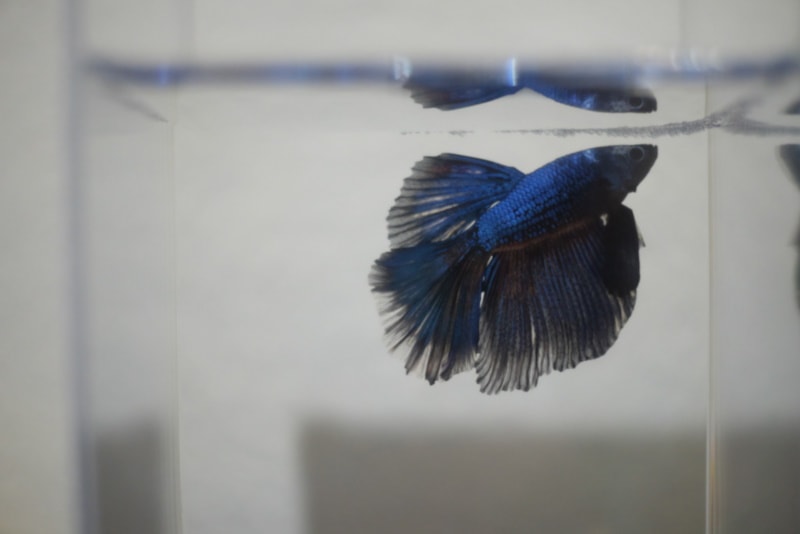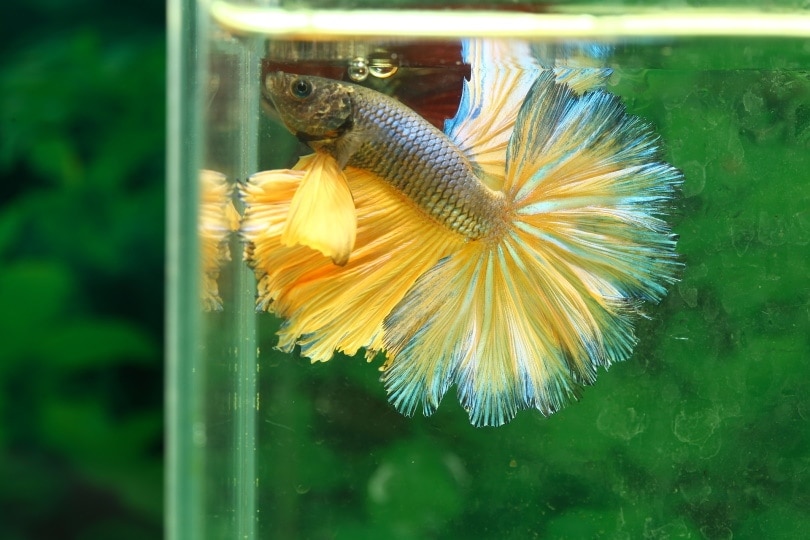Female Betta Sorority Tank Guide: Vet-Approved Setup, Caution & Maintenance Tips
Updated on

Click to Skip Ahead
Many of us dream of keeping bettas together, but after learning that bettas are naturally territorial, we seem to put the thought of housing them together in the back of our minds. Well, there is a way to keep bettas together, and many betta fish keepers have had great success with groups of bettas as well! However, keeping bettas together is best left to more experienced keepers who have several years of experience in caring for betta fish.
If you are a seasoned aquarist interested in keeping a sorority of female bettas together, this is the perfect article for you. This article will inform you on the best way to keep bettas thriving in the same tank while providing you with top tips gathered by the experts.
Important: Betta sorority tanks should strictly only house FEMALE betta fish.
Betta Sororities and How They Work
Betta sorority keeping isn’t a new idea but one that has become increasingly popular over time. It involves keeping a certain number of female bettas together in the same tank. There is a lot of effort and work that goes into keeping a successful group of female betta fish, but generally, it is maintainable for those who have previously kept community tanks and male bettas.
A typical description of a betta sorority tank is a heavily planted 20-gallon tank with six female bettas. A bonus to this is that you can also play around and add other peaceful community fish in with the group of female betta fish (provided your aquarium has enough space). For the sorority to work out, you will need to provide them with the right conditions and always have a second tank on hand in case you need to separate a particularly dominant or injured female from the tank.
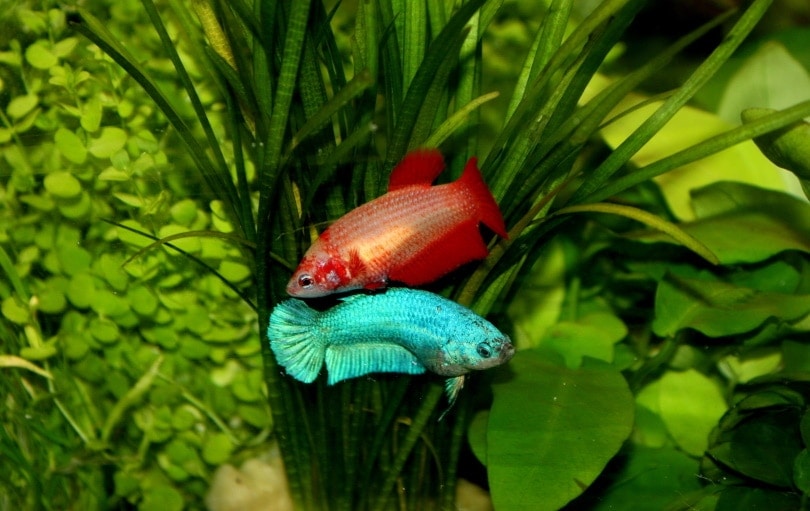
Before Starting a Betta Sorority Tank (Essential Items)
Before rushing in and placing a group of female bettas together, there are essential aspects to follow if you want your betta sorority tank to thrive. Here is a starter kit list to ensure you have the basic supplies to raise a group of female bettas:
- 20-gallon long aquarium: This can house 6 female bettas comfortably, but you should go bigger if you plan to add other tank mates like snails or small shoaling fish.
- A pre-set heater and thermometer: The temperature should be kept between 80°F–84°F (26.7 – 29 °C). Their ideal temperature is 82.4°F (28 °C).
- A filter: This should process around 5 to 7 times the tank’s volume in an hour.
- Plants & Ornaments: This will provide your bettas with a place to hide if another betta is acting out of territorial aggression. They also add visual barriers throughout the tank, which ensures that your bettas cannot always see each other.
- Substrate: This is not mandatory but adds many benefits to a tank.
- Spare/Hospital Tank: If you ever need to separate your fish.
- Stress Medication: Stress medicine (such as Methylene blue) can help an injured fish recover faster.
Once you have bought the essential items, it is time to start setting up the tank and begin preparing it for your new group of female bettas.
How to Set Up a Betta Sorority Tank in 6 Easy Steps
Setting up a new aquarium is fun! You have the option to make the tank as lavish or plain as you want to. There are a lot of opportunities to create the perfect environment for your new female bettas.
Here’s one way to go about creating and setting up a betta sorority tank:
1. The tank and stocking ratio
The tank should be between 15–55 gallons and placed in the area you want it to stay. Start by rinsing the substrate and then gently layering it along the bottom of the aquarium.
- 15-gallon: 3 female bettas
- 20-gallon: 6 female bettas (desired amount) & snails
- 25-gallon: 7 female bettas & large snails like an apple snail
- 30-gallon: 8 female bettas & 1 set of shoaling fish and some snails
- 40-gallon: 10 female bettas & 2 sets of shoaling fish and snails
- 55-gallon: 12 female bettas & 3 sets of shoaling fish and snails
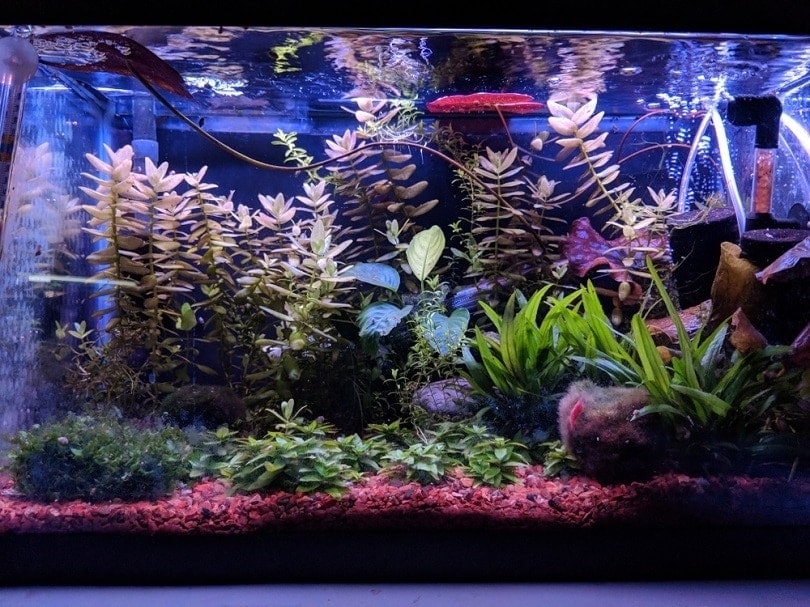
2. Water conditioning
Once you have placed the substrate of your choice in the tank, you can then begin filling it with water. Ensure you use a water conditioner to rid the water of any chlorine, chloramines, heavy metals, and other contaminants that might be harmful to fish.
3. Planting
Once the water is at the desired level, it’s time to start planting. You want to aim for a heavily planted tank full of bushy live plants. Hornwort, Vallisneria, java fern, and subwassertang are examples of plants. Plants often carry snail eggs, hidden snails, and algae. If you are keen to quickly perform a disinfection on your plants, you can dip them in a diluted bleach solution of 1:20 (that is, 1 part bleach to 20 parts water).
Please keep in mind that this dipping method will focus on ridding your plants of potential hitchhikers and prominent algae, but algae can still show up in your aquarium due to other factors. You should not dip the plants for an excessive length of time. Consider the following guidelines:
- Thinly leaved/delicate plants, and more sensitive stem plants – 90 seconds (1 min 30 seconds)
- Most other plants – 120 seconds (2 minutes)
- Exceptionally hardy plants (Anubias species, Java Ferns) – 150 seconds (2 mins 30 seconds)
You should have a separate bucket with dechlorinated water ready before you dip your plants. Be sure the plants are thoroughly rinsed and soaked in the dechlorinating solution before adding them to your sorority tank.
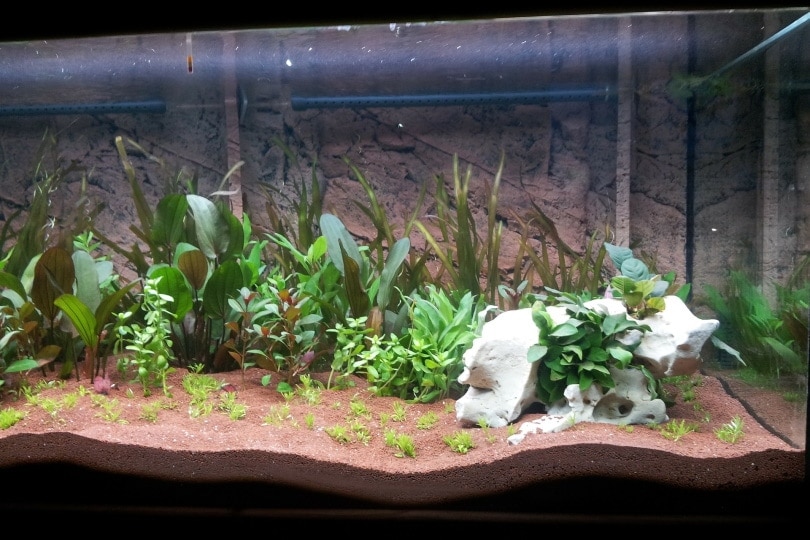
4. Equipment
Add in the filter and heater alongside an accurate thermometer. Set the heater at 82.0 – 83.0 °F (28 °C) and make sure it is rated more than the volume of water in your aquarium. A 20-gallon tank usually requires a 100W heater. Place the filter in the tank and turn it on. Add on any other equipment your tank has (for example, a carbon dioxide diffuser or plant lights).
5. The Nitrogen Cycle
Now that the setup is complete, it is time to cycle the aquarium for the next several weeks.
You can test if an aquarium is ready for fish by using a water test kit and some pure household ammonia (which you would have used to cycle the aquarium). Add enough ammonia in your aquarium until your test kit shows a reading of about 2 – 4 ppm. Let the aquarium “run” overnight (as in, leave it be with the filters running).
The next morning, both ammonia and nitrite should be 0 ppm. You should also see some nitrates (however in a heavily planted aquarium you might not be able to detect nitrates). If ammonia and nitrite levels are not 0 ppm the next morning, your aquarium isn’t ready for fish and you should hold off until it is.
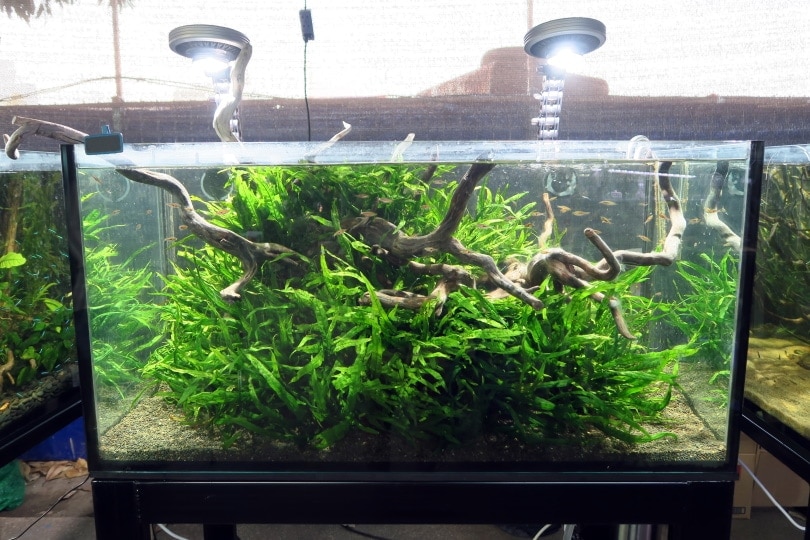
6. Add Your Fish
With the cycling process complete, it’s time to add your fish in. It’s best to opt for a group of females that are around the same size, age, and variant. It’s normal for your fish to squabble for a while after being added into their new home, as they establish a hierarchy among themselves. However, should you see a female become overly aggressive towards her conspecifics, or if you’re concerned about the welfare of any individual, you should separate them from the tank and place them in a hospital tank for a closer look.
Cautions and Concerns Regarding Betta Sorority Tanks
Even female bettas are territorial, but not in the same way males are. Female bettas can usually be kept together because they do not fight with the same intensity as males do. They prefer their own space and will not form a shoal. They do however form a hierarchy among themselves. One betta will always be the most dominant and may pick fights on occasion if they feel that another betta is in their territory.
Keeping female bettas together does not come without added risks, and it is a good idea to monitor their behavior. They should rarely fight for prolonged periods if they have the right-sized tank with a good number of live plants. Betta sorority is generally successful but be prepared that they may occasionally not settle on a hierarchy.
Always make sure that they are indeed females before you place them together. The pet store should label the genders on the container or display tanks they are held in. We recommend buying a group of females that are siblings from an ethical betta fish breeder in your area.
It is not advised to house two female Bettas on their own, as in this scenario one fish usually establishes herself as a dominant presence over the other fish, and constantly bullies her. A meaningful sorority requires at least 3 fish, but is much easier to accomplish with 5 or more females.
- Snails
- Emperor tetras
- Danios
- Endler tetras
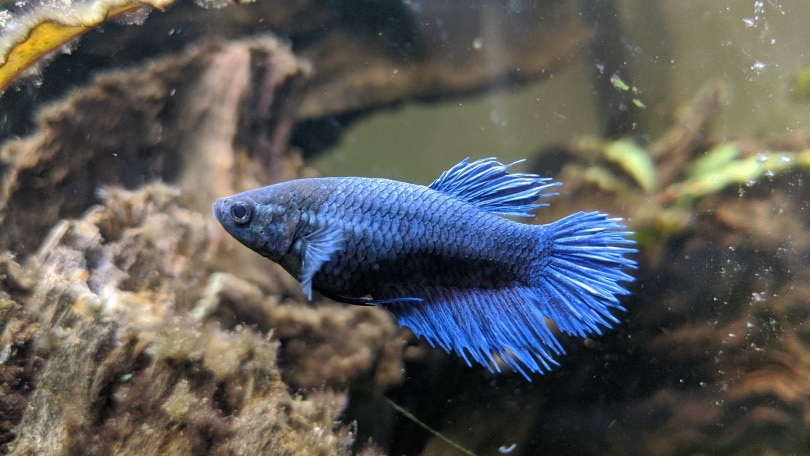
Maintenance and Cleaning
Once the sorority tank is set up and fully cycled, it will be easy to maintain and clean onwards. You will need to do a partial water change (about 25% or so) once a week to keep the water fresh and remove any excess nitrates and waste from the aquarium. Gravel vacuums are essential to ensure that all the excess waste and debris is removed from the tank.
When it comes to feeding, you want to place food in various places in the tank so that they do not all huddle together to fight over food in one spot. This will also reduce the risk of aggressive behavior from fighting over food.
Wrapping It Up
A sorority tank’s success rate depends on how much care the fish receive. Keep in mind the tank and the elements inside play a major role in determining if your female betta sorority will work out. If you provide them with all the essentials and plenty of hiding places, you will reduce the risk of fighting. Each betta will claim an area for territory, so make sure they are comfortable and have lots of places to hide. If you notice excessive fin-nipping behavior, it is best to go ahead and intervene as necessary.
Featured Image Credit: Hobi Atok, Shutterstock








